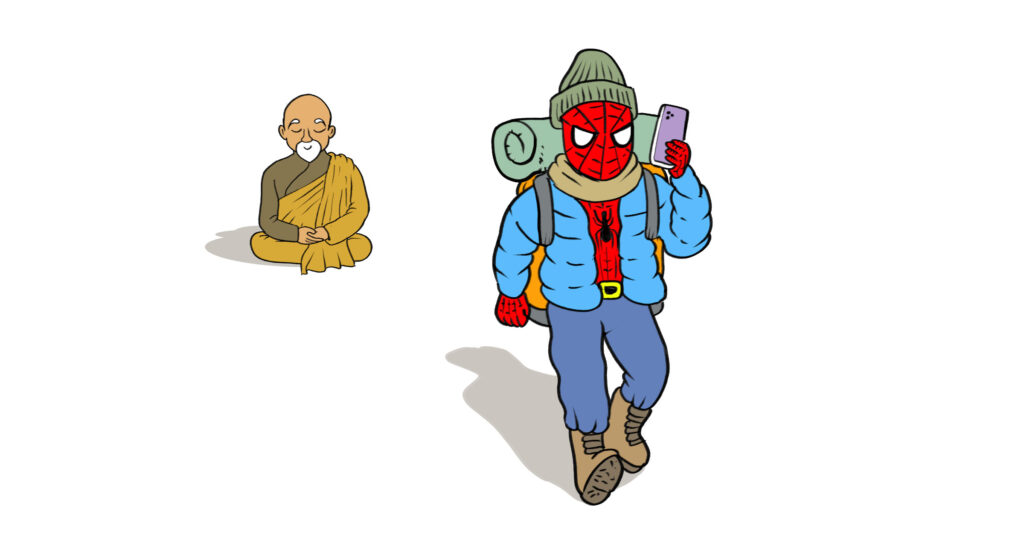(Context: Why Buddhist monastics are not allowed to perform miracles in public.)
The story of Devadatta illustrates how developing psychic powers in your meditation does not necessarily do anything to help you to attain enlightenment. Buddhism is primarily concerned with the cessation of suffering, and that can only come about through extinguishing the three fires of greed, hatred and ignorance. Psychic powers are a double-edged sword that can either help by deepening right samadhi, or hurt by flaming those fires even more. In Devadatta’s case, the latter tragically happened. That is why the Buddha never encouraged nor discouraged the development of psychic powers among monastics. There is not a single discourse where he told anybody to develop those powers, but when good monks like Moggallāna and Anuruddha came upon those powers, he did not discourage them either. For civilians, however, those powers are generally considered an unskillful distraction, neither to be pursued nor promoted, and therefore, monks are not to display those powers to them.
In modern times, I know a Zen teacher who told me in private that at one time, she accidently acquired the ability to hear other people’s thoughts. She found that very annoying because when she was not looking at somebody, she couldn’t tell if that person was thinking something or saying it out loud, so she would sometimes answer to something somebody was merely thinking, and it got very awkward. That power eventually faded away on its own, and she was happy that it did.
The Buddha gave a discourse that illuminates the meh-ness of miracles in the Buddhist view, but with a slightly different framing. He was at that time staying at Nālanda. A man called Kevaddha came to ask him to perform miracles to show the local townsfolk so that “they would come to have even more faith in the Lord [Buddha].” The Buddha’s reply was a fascinating menu of miracles the Buddha could perform, including:
- “Being one, he becomes many. Being many, he becomes one.”
- Passing through walls, and “diving into and out of the earth as if it were water”.
- Walking on water.
- Levitation.
- Traveling to the heavens.
- Telepathy. [1]
But for every menu item, the Buddha would say there was nothing impressive about it. Every single miracle on the list is a meh. After listing the menu, the Buddha talked about the most important miracle of all: the miracle of instruction. The miracle of instruction is when one is instructed in virtue, the jhānas, higher knowledge and vision, and finally, nirvana. Of all miracles, the miracle of instruction is the only one worthy of exhibition by an enlightened one. And that is why monks do not exhibit other miracles.
Oh, as a useful side note, in case this ever becomes relevant to you: yes, the Buddha did make an exception for saving lives. Buried somewhere in the monastic code in the chapter concerning stealing is a story where a superpowered monk named Pilindavaccha used his psychic powers to rescue two children kidnapped by criminals.[2] Some monks filed an ethics complaint to the Buddha accusing Pilindavaccha of breaking the rule disallowing the display of psychic powers in front of householders. The Buddha granted an exception for saving of lives. So, if you ever gain great power in your meditation, please feel free to discharge your great responsibility.

“I came all this way and what’s his lesson? ‘With great power comes great responsibility!’”
Activities:
- Reflect on this post with Angela:
- Have you experienced the miracle of instruction? I am deeply grateful for the miracle of instruction, which allows us in modern day to hear teachings on the true nature of mind, suffering and our life!
- What aspects of the Buddha’s teachings resonate most with you? Rejoice that you have the good merits to encounter it.
- Imagine that you live a wonderfully flourishing, joyful and free life. What is the major change for you to pivot towards this life?
- What stood out to you from this article? Why?
References:
[1] Kevaddha Sutta (Dīgha Nikāya 11).
[2] Theravada Vinaya on the Second Training Rule (Vin iii 41).
Artwork by Colin Goh.

